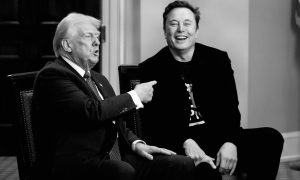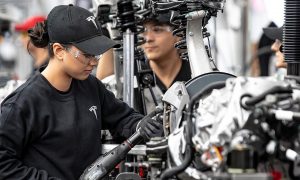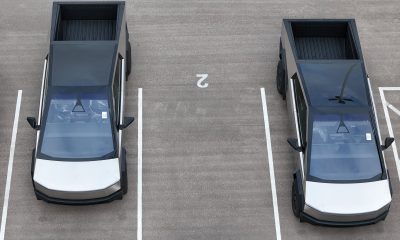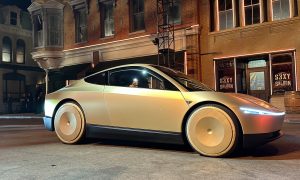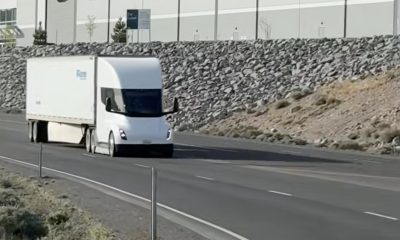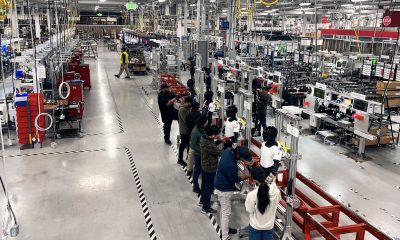News
Tesla responds to allegations of unjust pay and visa violations
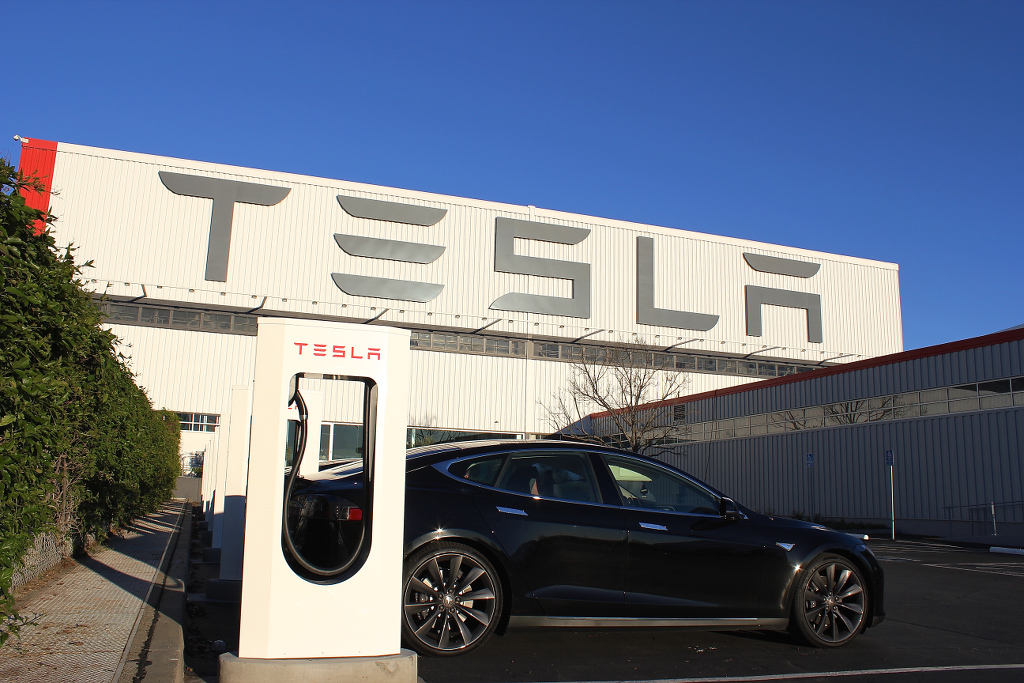
Tesla has issued a response to this weekend’s report that a factory worker who worked on the company’s high-volume paint shop at Fremont, CA plant was part of a group of foreign workers that were paid $5/hr and operated outside the terms of their visas.
The story has gained attention after the San Jose Mercury published a report of its recent investigation on Gregor Lesnik’s suit against the electric vehicle maker and several other defendants for unfair treatment in a workplace. The Mercury reports that a Slovenian company called ISM Vuzem flew Lesnik and a group of foreign workers to the U.S. while housing them in “nondescript apartments” where they would be shuttled from and to the Tesla plant to work six to seven days a week at low wages.
Among the claims in the lawsuit via the Mercury:
- Eisenmann USA wrote letters to the U.S. Embassy on behalf of Lesnik and as many as 200 foreign workers stating they would supervise employees at a U.S. auto plant. Most of the Vuzem workers were nonsupervisory laborers and tradesmen.
- Tesla issued company security badges to the foreign workers, recorded their time on site and shared responsibility for setting safety conditions.
- Vuzem required foreign employees to regularly work between 60 and 70 hours a week. Vuzem paid Lesnik an average of 800 euros per month, or about $900, for a rate of less than $5 per hour. Lesnik was promised an equal amount when he returned home, but the company never paid the balance.
- The companies violated wage and employment laws and benefitted from the cheap labor of foreign workers. Workers were promised $12.70 an hour based on a standard workweek. The suit estimates they are due $2.6 million in overtime and premium pay.
Tesla has issued a response to the story defending their stance that the company operated within legal limits stating that Lesnik’s claim is a moral issue at heart, but the company will see to it that the right thing happens and all are treated fairly should the claims be true.
According to Tesla’s issued response, Lesnik’s accident as a result of slipping on loose tile and falling three stories while working on the company’s high-volume paint shop, was investigated by the government regulator that oversees workplace accidents (Cal/OSHA) and found to be not at fault of the company. Tesla’s statement says, “When Mr. Lesnik brought a workers compensation case, Tesla was dismissed from the case because the judge concluded that we had no legal responsibility for what occurred.”
Here’s a copy of Tesla’s full response to the story.
“At Tesla, we aspire to operate on the principles of hard work and exceptional performance, but always tempered by fairness, justice and kindness. There are times when mistakes are made, but those are the standards to which we hold ourselves. With respect to the person at the center of this weekend’s article in the Mercury News, those standards were not met. We are taking action to address this individual’s situation and to put in place additional oversight to ensure that our workplace rules are followed even by sub-subcontractors to prevent such a thing from happening again.
Gregor Lesnik was brought to the Tesla factory by a company called ISM Vuzem, a sub-contractor brought in by Eisenmann, the firm that we hired to construct our new, high-volume paint shop. We contracted with Eisenmann for the simple reason that we do not know how to build paint shops and they are regarded as one of the best, if not the best, in the world. In our dealings with them, we have found them to be an excellent company, run by good people.
The article describes how Mr. Lesnik came to this country, the conditions under which Vuzem employed him and others to do their work, and how Mr. Lesnik ended up being injured while on the job. Assuming the article is correct, we need to do right by Mr. Lesnik and his colleagues from Vuzem. This is not a legal issue, it is a moral issue. As far as the law goes, Tesla did everything correctly. We hired a contractor to do a turnkey project at our factory and, as we always do in these situations, contractually obligated our contractor to comply with all laws in bringing in the resources they felt were needed to do the job.
Regarding the accident that resulted in Mr. Lesnik being injured, Cal/OSHA (the government regulator that investigates workplace accidents like these) came to our factory, investigated the incident and found that Tesla was not responsible. When Mr. Lesnik brought a workers compensation case, Tesla was dismissed from the case because the judge concluded that we had no legal responsibility for what occurred.
All of that is fine legally, but there is a larger point. Morally, we need to give Mr. Lesnik the benefit of the doubt and we need to take care of him. We will make sure this happens. We do not condone people coming to work at a Tesla facility, whether they work for us, one of our contractors or even a sub-subcontractor, under the circumstances described in the article. If Mr. Lesnik or his colleagues were really being paid $5 an hour, that is totally unacceptable. Tesla is one of the highest paying hourly employers in the US automotive industry. We do this out of choice, because we think it is right. Nobody is making us do so.
Tesla will be working with Eisenmann and Vuzem to investigate this thoroughly. If the claims are true, Tesla will take action to ensure that the right thing happens and all are treated fairly.
Creating a new car company is extremely difficult and fraught with risk, but we will never be a company that by our action does, or by our inaction allows, the wrong thing to happen just to save money.”
Elon Musk
Elon Musk is now a remote DOGE worker: White House Chief of Staff
The Tesla and SpaceX CEO Elon Musk is no longer working from the West Wing.
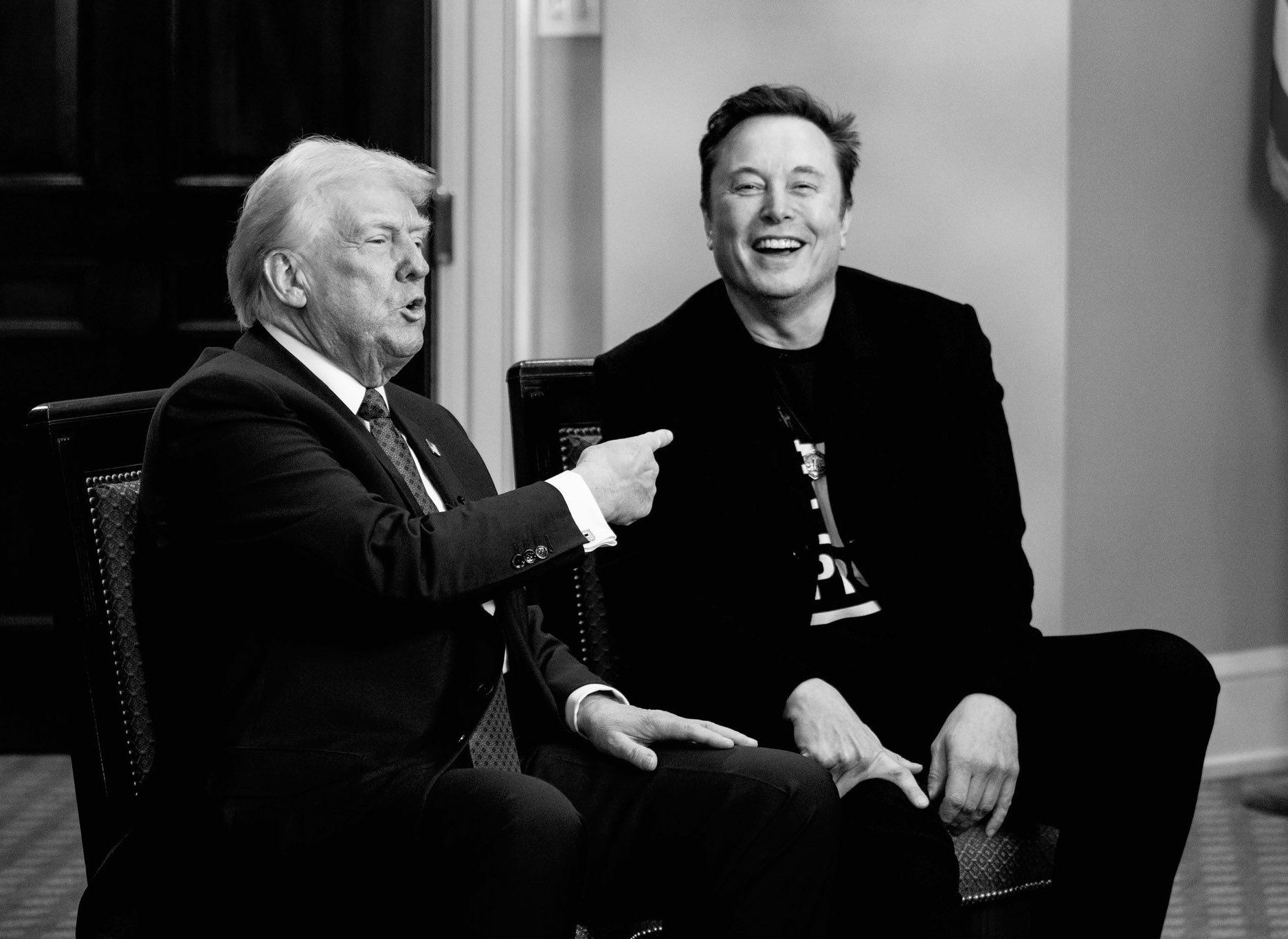
In a conversation with the New York Post, White House Chief of Staff Susie Wiles stated that Tesla and SpaceX CEO Elon Musk is no longer working from the West Wing.
As per the Chief of Staff, Musk is still working for DOGE—as a remote worker, at least.
Remote Musk
In her conversation with the publication, Wiles stated that she still talks with Musk. And while the CEO is now working remotely, his contributions still have the same net effect.
“Instead of meeting with him in person, I’m talking to him on the phone, but it’s the same net effect,” Wiles stated, adding that “it really doesn’t matter much” that the CEO “hasn’t been here physically.” She also noted that Musk’s team will not be leaving.
“He’s not out of it altogether. He’s just not physically present as much as he was. The people that are doing this work are here doing good things and paying attention to the details. He’ll be stepping back a little, but he’s certainly not abandoning it. And his people are definitely not,” Wiles stated.
Back to Tesla
Musk has been a frequent presence in the White House during the Trump administration’s first 100 days in office. But during the Q1 2025 Tesla earnings call, Musk stated that he would be spending substantially less time with DOGE and substantially more time with Tesla. Musk did emphasize, however, that DOGE’s work is extremely valuable and critical.
“I think I’ll continue to spend a day or two per week on government matters for as long as the President would like me to do so and as long as it is useful. But starting next month, I’ll be allocating probably more of my time to Tesla and now that the major work of establishing the Department of Government Efficiency is done,” Musk stated.
Elon Musk
Tariff reprieve might be ‘Tesla-friendly,’ but it’s also an encouragement to others
Tesla stands to benefit from the tariff reprieve, but it has some work cut out for it as well.
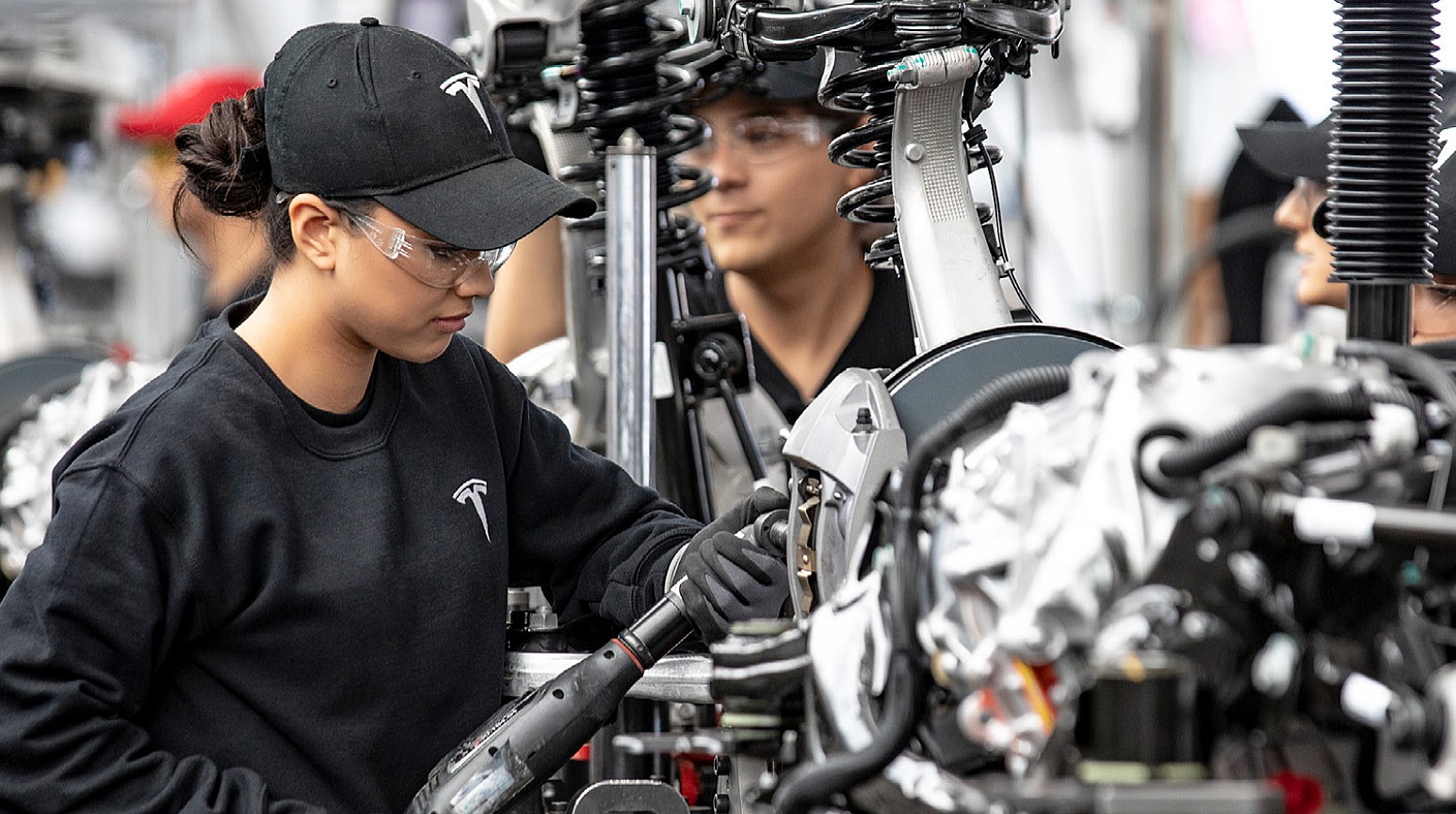
After Secretary of Commerce Howard Lutnick made adjustments to the automotive tariff program that was initially announced, many quickly pointed to the reprieve as “Tesla-friendly.”
While that may be the case right now, it was also a nudge of encouragement to other companies, Tesla included, to source parts from the U.S. in an effort to strengthen domestic manufacturing. Many companies are close, and it will only take a handful of improvements to save themselves from tariffs on their cars as well.
Yesterday, Sec. Lutnick confirmed that cars manufactured with at least 85 percent of domestic content will face zero tariffs. Additionally, U.S. automakers would receive credit up to 15 percent of the value of vehicles to offset the cost of imported parts.
Big Tesla win? Sec Lutnick says cars with 85% domestic content will face zero tariffs
“This is ‘finish your cars in America and you win’,” Lutnick said.
Many were quick to point out that only three vehicles currently qualify for this zero-tariff threshold: all three are Teslas.
However, according to Kelley Blue Book’s most recent study that revealed who makes the most American cars, there are a lot of vehicles that are extremely close to also qualifying for these tariff reductions.
Tesla has three vehicles that are within five percent, while Ford, Honda, Jeep, Chevrolet, GMC, and Volkswagen have many within just ten percent of the threshold.
Tesla completely dominates Kogod School’s 2024 Made in America Auto Index
It is within reach for many.
Right now, it is easy to see why some people might think this is a benefit for Tesla and Tesla only.
But it’s not, because Tesla has its Cybertruck, Model S, and Model X just a few percentage points outside of that 85 percent cutoff. They, too, will feel the effects of the broader strategy that the Trump administration is using to prioritize domestic manufacturing and employment. More building in America means more jobs for Americans.
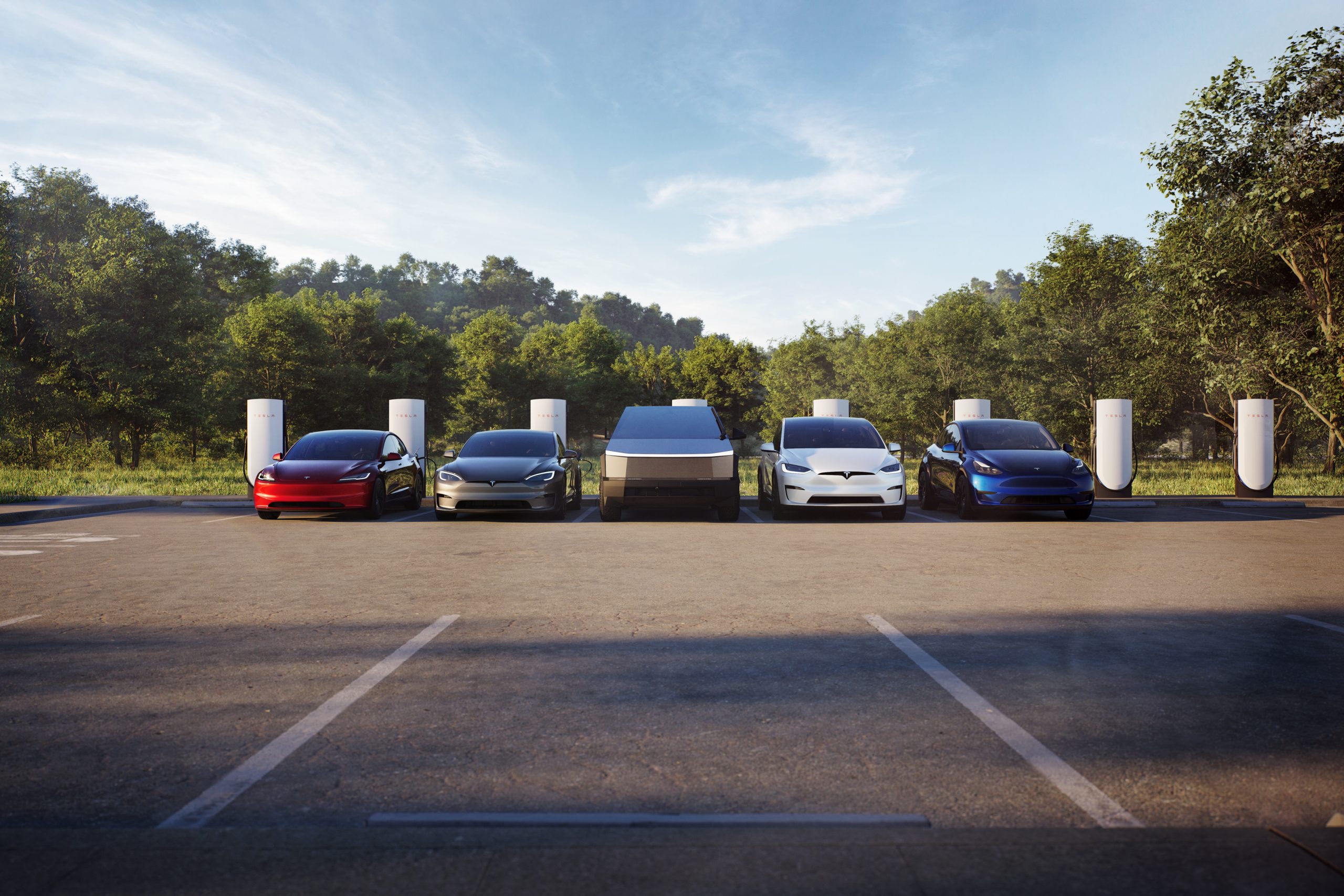
Credit: Tesla
However, other companies that are very close to the 85 percent cutoff are only a few components away from also saving themselves the hassle of the tariffs.
Ford has the following vehicles within just five percent of the 85 percent threshold:
- Ford Mustang GT automatic (80%)
- Ford Mustang GT 5.0 (80%)
- Ford Mustang GT Coupe Premium (80%)
Honda has several within ten percent:
- Honda Passport All-Wheel-Drive (76.5%)
- Honda Passport Trailsport (76.5)
Jeep has two cars:
- Jeep Wrangler Rubicon (76%)
- Jeep Wrangler Sahara (76%)
Volkswagen has one with the ID.4 AWD 82-kWh (75.5%). GMC has two at 75.5% with the Canyon AT4 Crew Cab 4WD and the Canyon Denali Crew Cab 4WD.
Chevrolet has several:
- Chevrolet Colorado 2.7-liter (75.5%)
- Chevrolet Colorado LT Crew Cab 2WD 2.7-liter (75.5%)
- Chevrolet Colorado Z71 Crew Cab 4WD 2.7-liter (75.5%)
These companies are close to reaching the 85% threshold, but adjustments need to be made to work toward that number.
Anything from seats to fabric to glass can be swapped out for American-made products, making these cars more domestically sourced and thus qualifying them for the zero-tariff boundary.
Frank DuBois of American University said that manufacturers like to see stability in their relationships with suppliers and major trade partners. He said that Trump’s tariff plan could cause “a period of real instability,” but it will only be temporary.
Now is the time to push American manufacturing forward, solidifying a future with more U.S.-made vehicles and creating more domestic jobs. Tesla will also need to scramble to make adjustments to its vehicles that are below 85%.
News
Tesla Cybertruck RWD production in full swing at Giga Texas
Videos of several freshly produced Cybertruck LR RWD units were shared on social media platform X.
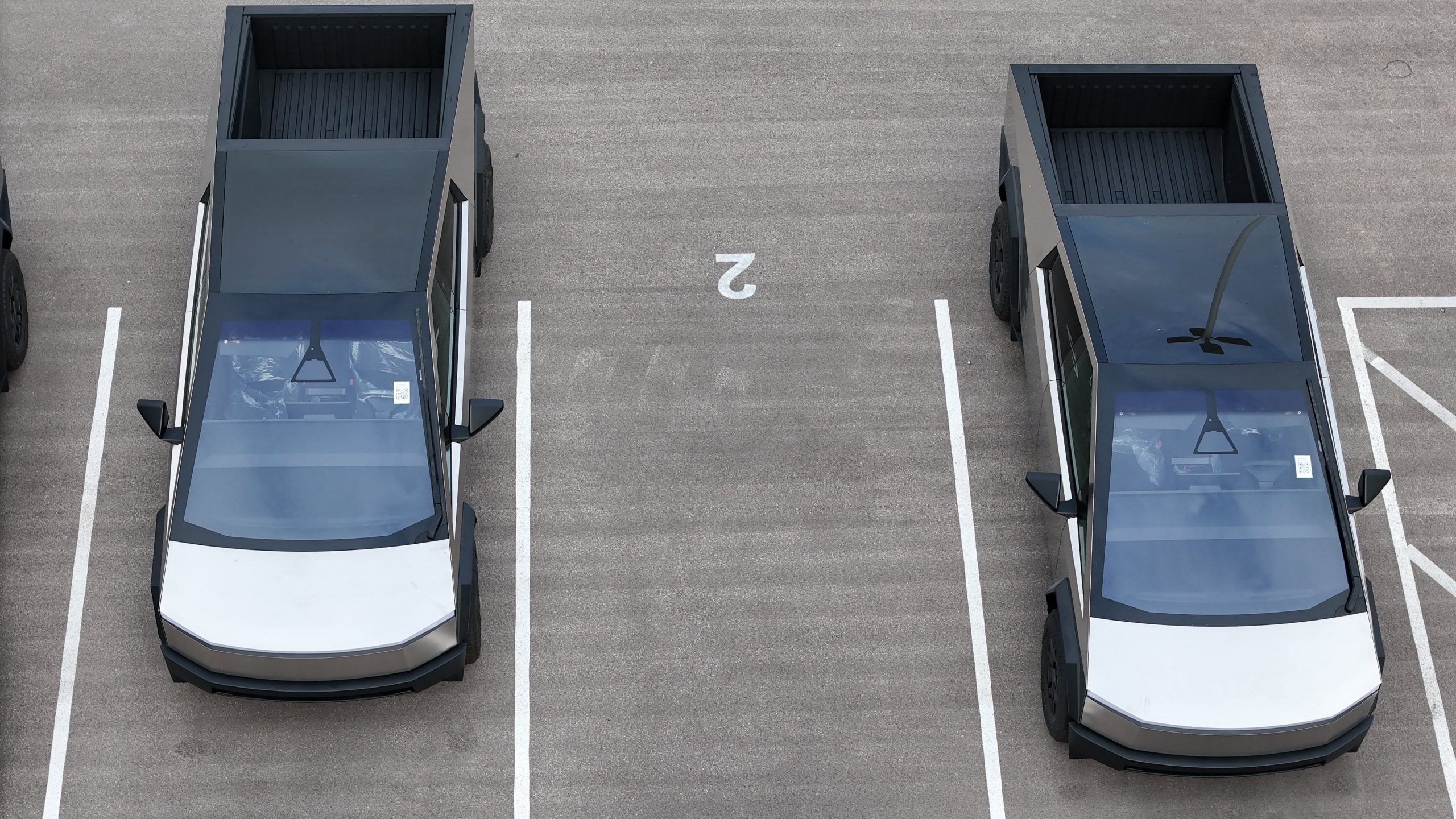
It appears that Tesla is indeed ramping the production of the Cybertruck Long Range Rear Wheel Drive (LR RWD), the most affordable variant of the brutalist all-electric pickup truck.
Videos of several freshly produced Cybertruck LR RWD units were shared on social media platform X.
Giga Texas Footage
As per longtime Tesla watcher Joe Tegtmeyer, Giga, Texas, was a hotbed of activity when he conducted his recent drone flyover. Apart from what seemed to be Cybercab castings being gathered in the complex, a good number of Cybertruck LR RWD units could also be seen in the facility’s staging area. The Cybertruck LR RWD units are quite easy to spot since they are not equipped with the motorized tonneau cover that is standard on the Cybertruck AWD and Cyberbeast.
The presence of the Cybertruck LR RWD units in Giga Texas’ staging area suggests that Tesla is ramping the production of the base all-electric pickup truck. This bodes well for the vehicle, which is still premium priced despite missing a good number of features that are standard in the Cybertruck AWD and Cyberbeast.
Cybertruck Long Range RWD Specs
The Cybertruck LR RWD is priced at $69,990 before incentives, making it $10,000 more affordable than the Cybertruck AWD. For its price, the Cybertruck Long Range RWD offers a range of 350 miles per charge if equipped with its 18” standard Wheels. It can also add up to 147 miles of range in 15 minutes using a Tesla Supercharger.
Much of the cost-cutting measures taken by Tesla are evident in the cabin of the Cybertruck LR RWD. This could be seen in its textile seats, standard console, seven-speaker audio system with no active noise cancellation, and lack of a 9.4” second-row display. It is also missing the motorized tonneau cover, the 2x 120V and 1x 240V power outlets on the bed, and the 2x 120V power outlets in the cabin. It is also equipped with an adaptive coil spring suspension instead of the adaptive air suspension in the Cybertruck AWD and Cyberbeast.
-

 News1 week ago
News1 week agoTesla’s Hollywood Diner is finally getting close to opening
-

 Elon Musk2 weeks ago
Elon Musk2 weeks agoTesla doubles down on Robotaxi launch date, putting a big bet on its timeline
-

 News6 days ago
News6 days agoTesla is trying to make a statement with its Q2 delivery numbers
-

 Investor's Corner1 week ago
Investor's Corner1 week agoLIVE BLOG: Tesla (TSLA) Q1 2025 Company Update and earnings call
-
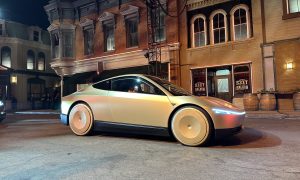
 Elon Musk2 weeks ago
Elon Musk2 weeks agoTesla reportedly suspended Cybercab and Semi parts order amid tariff war: Reuters
-
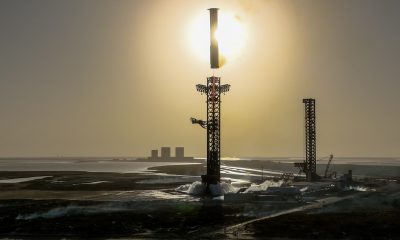
 SpaceX2 weeks ago
SpaceX2 weeks agoSpaceX pitches subscription model for Trump’s Golden Dome
-
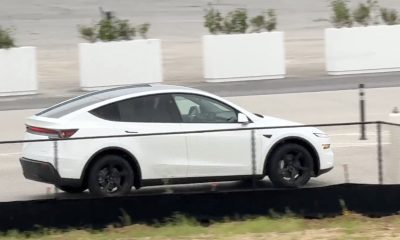
 News2 weeks ago
News2 weeks agoDriverless Teslas using FSD Unsupervised are starting to look common in Giga Texas
-
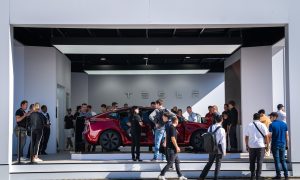
 News4 days ago
News4 days agoNY Democrats are taking aim at Tesla direct sales licenses in New York


